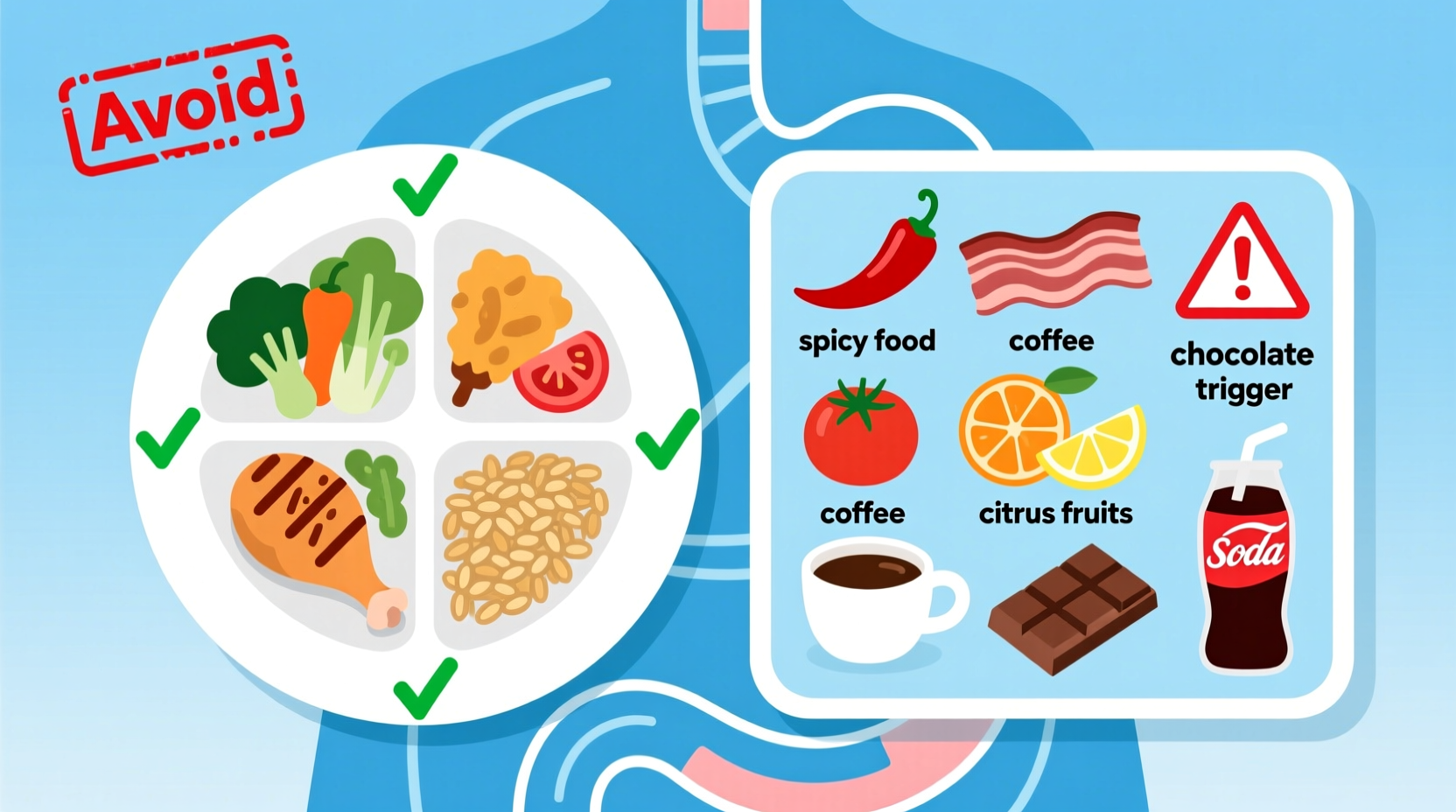If you're experiencing heartburn, avoid these common trigger foods: citrus fruits, tomatoes, chocolate, coffee, alcohol, fatty or fried foods, spicy dishes, mint, carbonated beverages, and onions. These items relax the lower esophageal sphincter or increase stomach acid production, worsening heartburn symptoms for most sufferers.
Understanding Heartburn Triggers: Your Complete Dietary Guide
Heartburn affects over 60 million Americans monthly, with diet playing a crucial role in symptom management. Understanding which foods to avoid isn't just about temporary relief—it's about creating sustainable eating habits that protect your digestive health long-term. This guide delivers evidence-based dietary strategies backed by gastroenterology research to help you identify and eliminate your personal heartburn triggers.
Immediate Action: Top 10 Heartburn Trigger Foods to Eliminate First
When heartburn strikes, these foods are most likely causing your discomfort. The American College of Gastroenterology identifies these as primary dietary culprits based on clinical evidence:
| Food Category | Why It Triggers Heartburn | Typical Reaction Time |
|---|---|---|
| Fatty & Fried Foods | Slows stomach emptying, increases acid production | 30-60 minutes |
| Tomatoes & Citrus | Naturally high acidity irritates esophageal lining | 15-30 minutes |
| Chocolate | Contains methylxanthine that relaxes lower esophageal sphincter | 20-45 minutes |
| Coffee (both regular & decaf) | Stimulates acid production regardless of caffeine content | 10-25 minutes |
| Alcohol (especially wine & spirits) | Relaxes esophageal sphincter, increases acid secretion | 15-40 minutes |
Why These Foods Cause Heartburn: The Science Simplified
Understanding the physiological mechanisms helps you make informed choices beyond just avoiding listed foods. According to research published in the American Journal of Gastroenterology, heartburn occurs when stomach acid flows back into the esophagus due to either:
- Lower esophageal sphincter (LES) relaxation: Triggered by certain food compounds, allowing acid to escape
- Increased gastric acid production: Some foods stimulate excess acid secretion
- Delayed stomach emptying: Fatty foods keep stomach contents longer, increasing reflux risk
Individual tolerance varies significantly—what triggers severe symptoms in one person might be tolerable for another. The National Institute of Diabetes and Digestive and Kidney Diseases (NIDDK) notes that identifying personal triggers through careful food journaling is more effective than blanket avoidance.

Practical Dietary Adjustments: What to Eat Instead
Eliminating trigger foods doesn't mean sacrificing flavor or nutrition. Implement these evidence-based substitutions that maintain meal satisfaction while reducing symptoms:
Smart Swaps for Common Trigger Foods
- Instead of coffee: Try chicory root coffee or roasted grain beverages (research shows 78% of heartburn sufferers report improvement)
- Instead of tomato sauce: Use roasted red pepper sauce or bechamel for pasta dishes
- Instead of chocolate: Opt for carob-based treats which don't contain methylxanthine
- Instead of fried foods: Choose air-fried or baked alternatives with minimal oil
- Instead of mint tea: Try ginger or licorice root tea which may actually help reduce symptoms
The Mayo Clinic recommends implementing the "three-day elimination test"—remove a suspected trigger for three days, then reintroduce it while monitoring symptoms. This method helps identify your specific triggers more accurately than generalized lists.
When Avoidance Isn't Enough: Additional Heartburn Management Strategies
Dietary changes alone may not resolve all symptoms. Consider these complementary approaches supported by clinical research:
- Eating pattern modifications: Consume smaller, more frequent meals (4-6 per day) to reduce stomach pressure
- Timing considerations: Wait 3-4 hours after eating before lying down (per American Gastroenterological Association guidelines)
- Positional awareness: Elevate your head 6-8 inches while sleeping to prevent nighttime reflux
- Stress management: Incorporate breathing exercises before meals as stress increases acid production
Remember that individual responses vary significantly. A study in Clinical Gastroenterology and Hepatology found that only 35% of participants reacted to all "common" trigger foods, highlighting the importance of personalized dietary approaches.
When to Consult a Healthcare Professional
While dietary changes help most occasional heartburn sufferers, certain symptoms require medical evaluation. The American College of Gastroenterology recommends consulting a physician if you experience:
- Heartburn more than twice weekly despite dietary changes
- Difficulty swallowing or painful swallowing
- Unintentional weight loss alongside heartburn symptoms
- Nighttime symptoms that disrupt sleep regularly
Persistent heartburn could indicate gastroesophageal reflux disease (GERD) or other conditions requiring professional treatment beyond dietary modifications.











 浙公网安备
33010002000092号
浙公网安备
33010002000092号 浙B2-20120091-4
浙B2-20120091-4